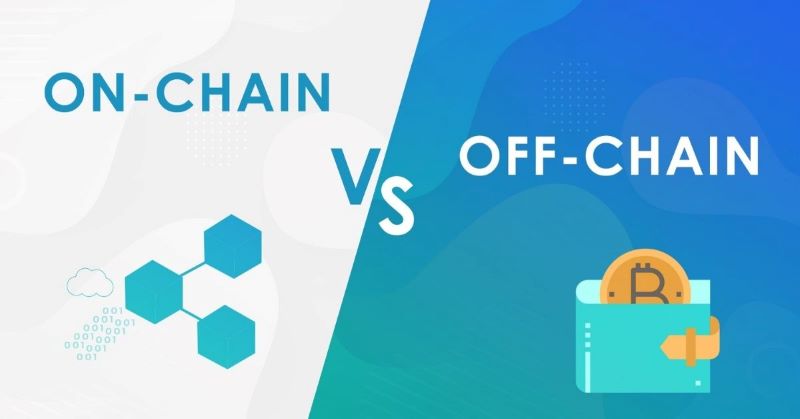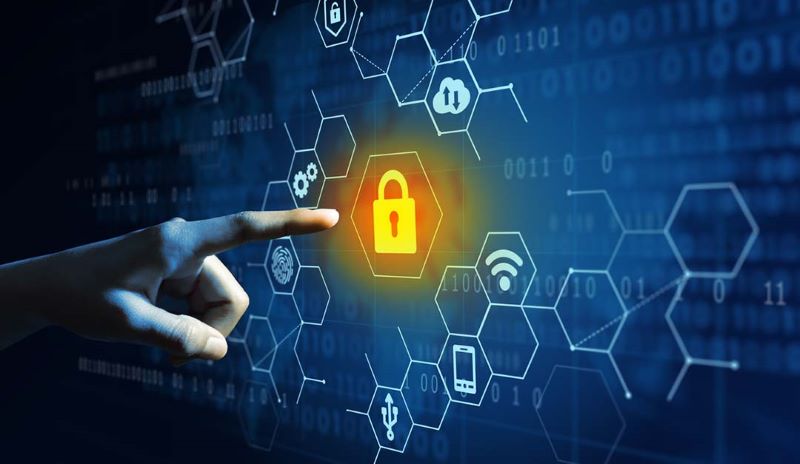Cracking the Code of Blockchain Security: Your Expert Audit Guide
In today’s digital age, securing your blockchain is non-negotiable. But how do you make sure it’s as safe as your digital wallet’s PIN? It’s all about mastering the process of a security audit for blockchains. From smart contracts to node infrastructures, a fine-tooth comb on your blockchain’s security can make or break its integrity. Buckle up as I guide you through the essential steps to bulletproof your blockchain against cyber-thieves!
Understanding the Importance and Scope of Blockchain Security Audits
Exploring Why Regular Audits are Vital for Blockchain Integrity
Think of a blockchain like a train made of steel. Now, no matter how strong it looks, a small fault can cause a big wreck. So, just as trains get checked, blockchains need security audits. These checks help find weak spots in the digital ledger. They keep the blockchain safe and right on track.
Now, why are these checks so key? First off, an audit makes sure the rules on the blockchain are airtight. This is a must for trust. No trust, no users. Simple as that. Plus, this helps avoid foul play, like hacks that can swipe coins or mess up data.
Unpacking the Comprehensive Scope of a Security Audit
An audit digs deep into the blockchain. It’s not a quick peek. It has many steps and checks a ton of stuff, from code to how data gets saved and moves. We call this “scope.”
Let’s break it down. First, it’s all about finding bugs before the bad guys do. This is what we term “vulnerability assessment for blockchain.” Think of it as a treasure hunt for holes that need patching up. Then we get to “blockchain penetration testing,” which is like a practice run for hacks. This way, we see how tough the system is when under attack.
Another biggie is “smart contract audits.” These are like the spells that make the blockchain magic happen. Getting them wrong can be a real mess. So, we look at them very, very closely. Also, we check how the whole system agrees on stuff, known as the “consensus mechanism security review.” This is key to making sure no one is messing up the ledger.
With “on-chain security analysis,” we comb through every bit of the blockchain’s own turf. But we can’t stop there. So, next comes “off-chain security assessments.” These are checks done off the main path, like looking at backup systems.
Now, laws are big in blockchain land. That means “blockchain compliance checks” are a must to keep things legal. And the outcome? Well, that’s the “blockchain security audit report.” It tells you what’s good, what’s not, and how to fix it.
In all, the goal is to shield your digital coins and contracts from trouble. A proper audit looks at it all — from “node security in blockchain networks” to the “security audit protocol for blockchain.” You see, leaving even one stone unturned can be risky.
When it’s done just right, an audit can shore up your blockchain. It shows you’re serious about keeping users safe. And that’s something we all want. By the end, the audit team hands over a “post-audit blockchain security recommendations” list. It’s your game plan for stronger defense.
Keep in mind, each blockchain is one of a kind. So, the steps and tools we use may differ. It’s like having a custom-made shield. It fits just right and gets the job done. Going through this process means your blockchain gets the best cover against threats. In the end, a strong audit gives us a blockchain we can rely on, now and into the future.
Diving into the Blockchain Security Audit Process
Conducting Thorough Smart Contract Audits
When we talk about security in blockchain, smart contract audits are key. They are like a check-up for the parts of blockchain that run programs. First, we look at the code line by line. This means checking that the code does what it’s meant to do. It also means finding parts that could let hackers in. We do tests that act like real-world use. This shows us how the contracts will work when people really use them.
We use tools that track down problems in code, and watch for errors as the program runs. As an expert, I follow best practices to keep smart contracts safe. By doing so, we avoid flaws and protect your digital treasures.
Implementing Rigorous Vulnerability Assessments for Blockchain
Now, let’s get into vulnerability assessment for blockchain. It’s like putting a shield around your blockchain. We start by listing and ranking all the possible risks. This list is our map to find where the bad guys could attack.
We use special tools that test the blockchain like a hacker would. This testing is known as penetration testing. It’s a big deal because it finds weak spots before the bad guys do. We check every part of the blockchain, both seen and unseen. This means both the parts of the system that are on the ledger and the parts that are not. It’s important to look everywhere because risks can hide.
We also look at how the blockchain agrees or “consents” to updates, known as the consensus mechanism. This is to make sure no one can mess with the system. And, of course, we inspect each place that processes blockchain information, called nodes. Safe nodes mean a safer blockchain.
After all this, we create a report. This report tells you what we found and how to fix it. Reports are your guide to make your blockchain safer. We walk you through every step.
Our goal is to keep your blockchain safe with a top-notch security check. By doing this, we build trust and keep your blockchain strong. A strong security audit makes digital ledgers reliable, now and in the future.
Assessing and Enhancing Security Controls
Performing On-chain and Off-chain Security Assessments
When we check blockchain systems, we look at two main areas—on-chain and off-chain. On-chain refers to all the parts that make up the blockchain itself. Off-chain is everything else that interacts with the blockchain. These parts also matter for security.
We start with on-chain assessments. This is where we dive deep into smart contract audits. We look at the code line by line, searching for any weak spots. We also do blockchain penetration testing. This means we test the system’s defenses like a hacker would. But our goal is to find and fix problems, not cause them.
Next, comes the off-chain checks. We look at how the nodes interact with each other, and with external systems. Here we focus on vulnerability assessment for blockchain. These are security checks that help find any gaps in protection. We use tools and know-how to track down issues.
Reviewing Consensus Mechanism and Node Infrastructure Security
Now let’s talk about the heart of blockchain security—the consensus mechanism. This is the rulebook that tells nodes how to agree on what’s true on the blockchain. Each type of mechanism has its strengths and risks. We check to make sure these rules keep the blockchain safe and fair.
But what about the nodes? These are the computers that hold copies of the blockchain. They need to be tough against attacks. So, we do a node infrastructure security review. This is a deep look at how nodes are set up and protected.
For both on-chain and off-chain, we use a blockchain security audit checklist. It guides our process, so we don’t miss a thing. It’s like a detective’s notepad, keeping track of every clue.
In the end, we lay out our findings in a security audit report. This tells you what’s working and what’s not. We also give you a plan to fix any issues. This helps you avoid blockchain security flaws in the future. Remember, keeping a blockchain safe is not just about finding problems. It’s also about stopping them before they start.
Security in blockchain is a big deal. It builds trust and keeps everyone’s data safe. That’s why at every step, we stick to the best practices for blockchain security. This is how we help to keep your digital ledger strong against threats from all sides.
From Audit Results to Enhanced Protection
Analyzing and Reporting Security Findings
After a blockchain security audit, we get loads of data. It’s like finding hidden messages that tell us how strong or weak a blockchain system is. As an expert, my first job is to dig into these details. I have to be like a detective looking for clues. I check the blockchain security measures to find any weak spots. I use tools built just for this. They help me test the system in many ways.
Next, I look at the smart contract audits. Smart contracts are like the rules that run the blockchain. They need to be tight, with no room for errors. Errors could lead to theft or loss. That’s why we check them over and over again. It’s crucial to do this right. For every blockchain security audit, I follow a checklist. This helps me not to miss any steps.
Risk analysis is another part of my job. I ask, “What could go wrong?” Then I look for those things in the blockchain. I’m always on the lookout for risks that could hurt people using the blockchain.
I also do what’s called penetration testing. This is like trying to break into the system to find weak spots. It’s a test to see how well the blockchain can handle attacks from bad guys.
When all the tests are done, I write a report. This report shows what’s good and what’s not so good. It tells the guys who run the blockchain how they can make it safer.
Translating Audit Insights into Actionable Security Enhancements
Now, let’s take those findings and make things better. We just found out where the blockchain needs help. It’s time to fix things up. We look at things like node security and how well the team responds to problems.
Sometimes, the code needs a little change, or the way the blockchain is set up might need tweaking. These changes can make a big difference. They can keep the blockchain safe from hackers. The real work starts after the audit.
Blockchain security testing told us the issues. Now we upgrade security to stop those issues from hurting anyone. We bring in new rules to make the system tough against attacks. Some call these rules best practices for blockchain security. They help everyone using the system stay safe.
We also help set up a plan for bad times. If things go south, the plan tells the team how to fight back and fix the problems fast.
My job is to make sure when people use a blockchain, they can trust it. They need to know their stuff is safe. So, we take audit results and make the blockchain better. That way, everyone’s happy and secure. With each step, we’re building trust and making the digital world a safer place.
We’ve zipped through why blockchain security audits matter and how they work. Regular checks keep blockchain strong and safe. We’ve seen that a proper audit digs deep, studying everything from smart contracts to system weaknesses. Plus, we looked at how to turn audit results into better protection. Remember, consistent security checks and updates are your best bet to keep your blockchain solid. Stay sharp and keep learning; your blockchain’s safety hangs on it!
Q&A :
What is involved in a security audit for blockchain technology?
A security audit for blockchain technology typically involves a comprehensive examination of the system’s architecture, including smart contracts and consensus protocols, to identify vulnerabilities and ensure that all security measures are effective against potential threats. The process usually includes code review, risk assessment, penetration testing, and validation of cryptographic practices. Auditors will also assess the implementation of access controls and evaluate adherence to industry best practices and compliance standards.
Why is a security audit important for blockchain networks?
Security audits are vital for blockchain networks as they play a key role in safeguarding the integrity, confidentiality, and availability of the network. Blockchains often involve significant financial assets and sensitive data, making them attractive targets for cyberattacks. Regular security audits help in preventing hacks, frauds, and unauthorized access by detecting and addressing potential security gaps before they can be exploited.
How often should blockchain security audits be performed?
The frequency of blockchain security audits should be determined based on the complexity of the blockchain system, the volume of transactions, and the level of potential risk exposure. For high-stakes environments or rapidly evolving platforms, periodic audits such as bi-annual or annual reviews may be required. Additionally, a security audit is strongly recommended after any major updates or before launching a new service or smart contract.
What are the key steps in conducting a security audit for blockchains?
Conducting a security audit for blockchains involves several key steps:
- Preliminary analysis to understand the architecture and technology stack.
- Review of the codebase, including smart contracts, for security flaws and bugs.
- Risk assessment to identify and classify potential threats.
- Penetration testing to simulate attacks and identify weaknesses.
- Verification of compliance with legal and industry standards.
- Detailed report generation that outlines identified issues and provides remediation strategies.
Can smart contracts on blockchains be audited, and how?
Yes, smart contracts on blockchains can and should be audited to ensure they are secure and function as intended. The audit process typically involves a meticulous review of the contract code to identify vulnerabilities such as reentrancy, overflow/underflow, and gas limit issues. Automated tools alongside manual testing by experienced professionals are employed to comprehensively assess the smart contract’s logic, performance, and security posture.




RELATED POSTS
WOO Network: A powerful DeFi financial platform
WOO Network (WOO) is a...
DuckChain Airdrop: Great opportunity to get free Tokens
In the context of rapid...
Solayer Airdrop – Secrets to Maximizing Profits
To maximize profits from the...
How to Choose a Crypto Wallet: Secure Your Digital Fortune
How to choose a crypto...
Mechanics Of Blockchain Technology: How It’s Transforming Tech
Learn the Mechanics of Blockchain...
Green Crypto Coins: Investing in a Sustainable Digital Future
Understanding the Future of Sustainable...
Top 3 Secrets behind Bitcoin Peak that you must know
The rise and fall of...
Benefits of Trustless Transactions: The Future of Secure Exchanges?
Discover the economic advantages of...
What are the different types of blockchain: Unveiling Its Varied Forms
Discover the different types of...
The Future Of Blockchain Technology: What’s Next for Digital Ledger Tech?
The future of blockchain technology...
What can you get with leetcoins? Discover now!
What can you get with...
How does blockchain technology help organizations when sharing data
Wondering “How does blockchain technology...
What is Bitcoin Lightning Network? Revolutionizing Crypto Transactions
What is Bitcoin Lightning Network?...
Hashgraph Consensus Demystified: Unlocking Blockchain’s Future Potential
Discover the technical mechanics of...
Blockchain Breakthrough: How can blockchain improve patient data security
How can blockchain improve patient...
Mining Cryptocurrency how to? How to read trading charts cryptocurrency?
When venturing into the world...